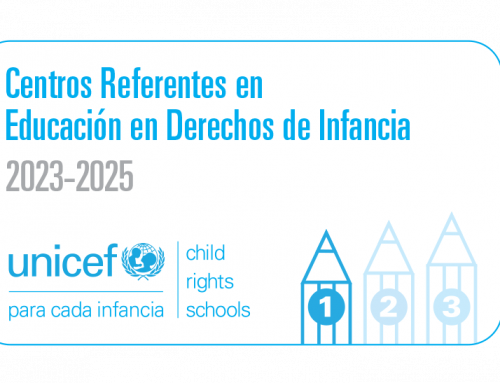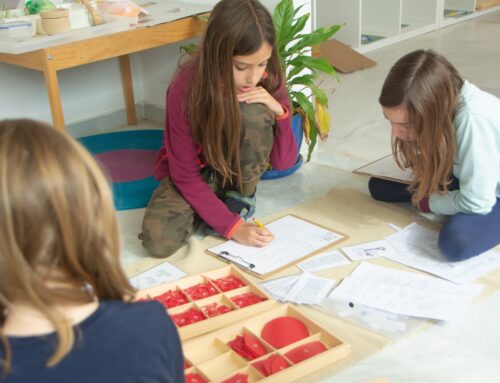High abilities children in Montessori school
Montessori environments are a space where all children can develop, regardless of their specific condition, as long as these learning places offer adequate treatment on an emotional level and have the necessary resources to address any need, including high abilities.
The legal framework for high abilities in Andalusia establishes a set of necessary actions when dealing with these children in the classroom. It also offers us the opportunity to know what are considered high abilities, how to detect them, what plans to implement and how to inform educational agents about them
But what really happens when we must accompany students with high abilities in Montessori environments?
It is well known that Montessori pedagogy is supported by Neuroscience. This fact is one more quality to love pedagogy and is that Dr. Maria Montessori, more than 100 years ago, developed a way of showing the world to children that today goes hand in hand with neuroscientists in demonstrating how human beings relate to the outside and integrates this into their being, offering the necessary answers.

Many of the actions that are already carried out when working with children in Montessori environments, in essence, respond to students with high abilities. But if we specify further and relate the actions that occur in Montessori environments with children with high abilities from the perspective of Neuroscience, we can refer to the following points of intervention with the students in question:
– Individualized intervention: Given the great variability of intelligences that can occur in children within the environments or classrooms, it is important that the educational intervention is adapted to the needs and demands of the students. The teacher, in our case the guides, act as a link to take advantage of the potential of the child with a certain type of intelligence and promote other types of related intelligences, integrating areas, carrying out specific projects or observing interests to guide the corresponding learning.
– Rich and varied activities: Children with high ability seem to use more areas of the brain to accomplish a task. It is important to offer activities that stimulate different brain areas, so the work in the environment is based on integrating different concepts in learning, offering meaningful activities for students, allowing them to be protagonists of the learning process and generating autonomy in their academic and personal environment.
– Neuropsychological differences: It is essential to take into account the neuropsychological differences between students with high abilities and other diagnoses associated with high abilities. That is why it is important to investigate the specificities of each child in order to adapt learning and how it can reach them in the most effective way. This is a maxim in Montessori environments
– Metacognition: High intellectual ability is related to metacognition, believing that children with high abilities will have a greater metacognitive repertoire for the management of their high and global intellectual resources. Therefore, it is important to encourage the identification of strategies necessary for task resolution and the focused activation of relevant brain areas. This is done in Montessori environments through specific observation tasks, organization of precise tasks and use of specific materials that develop the fundamental areas in children with high abilities.

– Neural efficiency: Smarter brains have greater efficiency and lower energy consumption during task resolution. It is important to encourage inhibition of areas irrelevant to the resolution and focused activation of relevant ones. In this regard, the work in the Montessori environment focuses on working without unnecessary repetition, focused on the precise objective we want to develop.
– Early identification: It is essential to identify students with high abilities as early as possible in order to adapt their education and adequately support their development. Montessori environments allow working without a specific ceiling where children must stop in their learning, so it is interesting that they can work and develop according to their own intellectual and emotional needs. Constant observation allows us to detect common milestones in children and assess a specific intervention through specific plans that take into account the needs of each child, in addition to informing families of our perception to make accurate assessments to confirm the diagnosis and establish collaborations with experts to improve the overall intervention with the child.
– Collaborative learning: Encouraging collaborative learning to teach social skills is important for children with high abilities. This will help students develop important skills such as teamwork, empathy and conflict resolution. The mobility in the Montessori environment and the flexibility in the work allow for group activities that improve the interaction and social understanding of children with high abilities.

– Use of personalized technology: Use personalized educational technology for the development of cognitive skills, such as mental games and memory exercises that challenge and stimulate the child’s intellectual abilities. Understanding technology as an educational resource that helps their development in the Montessori environment by basing learning on the correct use of the screens.
– Self-directed learning: Encourage self-directed learning and teach students to be independent learners, encouraging them to set their own path and pace of learning. Basic in Dr. Montessori’s pedagogy!
– Provide emotional support: High ability students can feel overwhelmed, isolated and misunderstood, so it is essential to provide emotional support and create a supportive environment with other children with whom they share the same experiences. This aspect is vital in the overall development of all children, without distinction, in the environments. Personalized learning that allows the emotional part to be adequately integrated is essential to sustain a healthy evolution in any child, whether or not he or she has high abilities.

– Emphasize the learning process over the final results: Instead of emphasizing the final results, learning and interest in the process itself should be encouraged, so that children are encouraged to investigate, experiment and learn at their own pace. In Montessori environments there are no quantitative grades, but qualitative reports. Children enjoy the process without being evaluated with numbers, but according to the process followed with specific Montessori materials that help them to follow the learning process.
Could a child that we suspect or is diagnosed with high abilities be in a Montessori environment and learn appropriately?
Definitely yes! As long as the necessary resources are in place to address any needs, a child with high abilities or suspected high abilities can thrive in Montessori environments. In fact, as we have analyzed above, according to Neuroscience, Montessori pedagogy responds to students with high abilities in a totally appropriate way.
In our school, EducoMontessori International School, we are fortunate to have exceptional children and a committed team. One of the resources that EducoMontessori International School is committed to is the continuous training of teachers in this area and working hand in hand with other experts in the field or professionals who have made the assessment of the students in question and do their monitoring. Our maxim is to meet within our environments, any need that children have, bearing in mind the educational and comprehensive quality that we pursue.
Do you want to know more about our school?

















